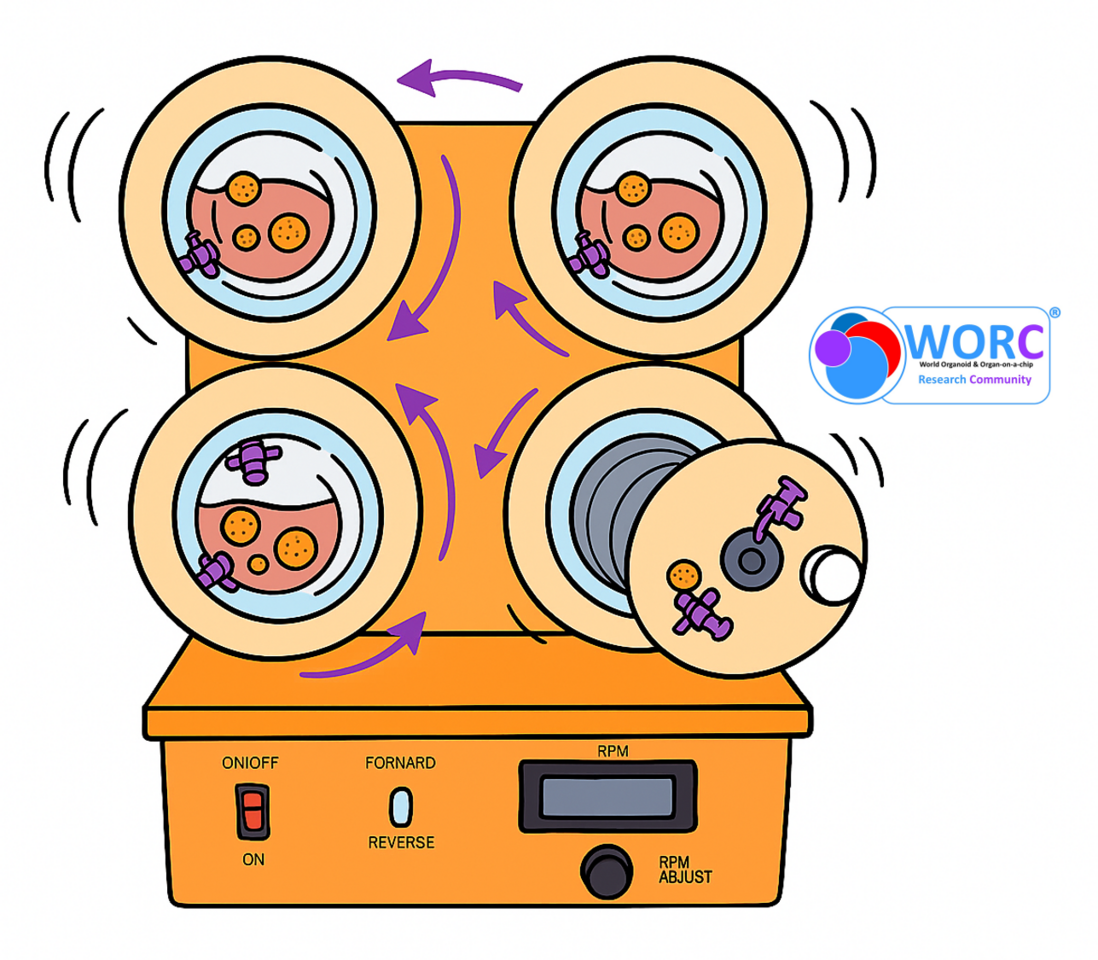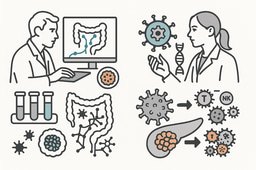How we simulate microgravity on Earth?

Why microgravity matters for organoids & organ-on-chips?
Microgravity changes mechanical cues (shear, sedimentation, cell-matrix interaction, fluid dynamics) that strongly influence 3D self-organisation, differentiation, ECM secretion and vascularisation. Researchers exploit those changes to form better organoids, to probe disease mechanisms, and to produce tissue constructs that are hard to obtain under 1g (acceleration due to gravity acting on an object at rest on Earth’s surface).
How is microgravity simulated?
On Earth, microgravity is mimicked using several systems that minimise the constant pull of gravity. Clinostats rotate samples to continuously change the gravity vector, averaging its direction to near zero. Random Positioning Machines (RPMs) do the same with two-axis random rotation, often used for 3D cell culture. The Rotating Wall Vessel/Rotary Cell Culture System (RWV/RCCS) creates a gentle, low-shear environment where cells remain suspended, widely used for tissue engineering. Magnetic levitation uses strong magnetic fields to counteract gravity on tiny samples, while short free-fall platforms like drop towers and parabolic flights provide true but time-limited microgravity.
Here is an example of how a random positioning machine looks:
How is microgravity used in 3D biology research?
Microgravity offers a unique environment to study how cells grow, organise, and function without the constant pull of gravity. In simulated or real microgravity, cells often form larger 3D organoids, with altered cell–cell and cell–matrix interactions compared with standard 1g culture (https://doi.org/10.1186/s12915-024-02062-1, https://doi.org/10.1038/s41526-024-00442-z). It also helps guide stem cell fate and differentiation, offering new ways to control organoid composition and maturation (https://doi.org/10.1093/stcltm/szae070). Because cells remain suspended, microgravity conditions can promote improved 3D architecture and vascular-like network formation useful for tissue engineering.
In your opinion, will microgravity become a standard tool in every tissue-engineering lab, or will it remain a niche space-tech approach?





Please sign in or register for FREE
If you are a registered user on WORC.Community, please sign in